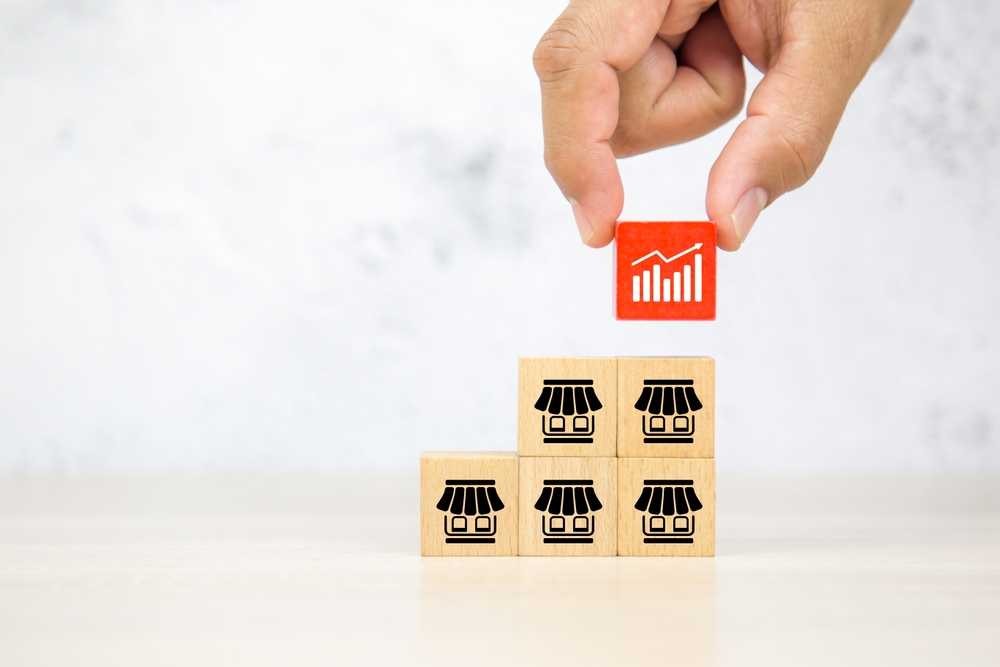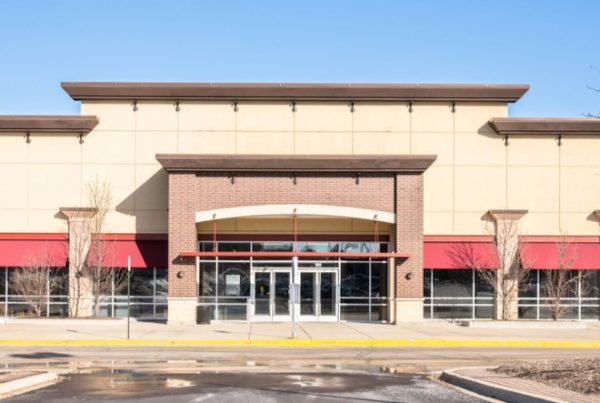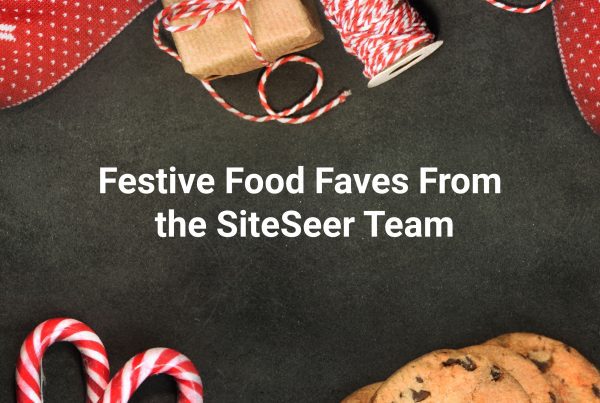
If you’re a small-but-growing restaurant chain, food retailer, or other retail business scaling from a few locations to a double-digit number, you might wonder: is now the time to scale?
Learn from two chain businesses that picked the right geographic markets and made decisive moves that paid off. Their blueprints are excellent if your retail or restaurant business is succeeding and ready to open new locations in 2025 or 2026.
Salad & Go: Opening a Store Per Week in 2024
Salad and Go opened in Gilbert, Arizona, in 2013 as a fast-food concept offering healthy, natural options—think salads, soups, and smoothies—in the same convenient, cost-effective delivery model. That meant a small footprint of under 750 square feet: drive-through or pickup only.
By the middle of 2018, the healthy fast-food chain had 11 locations around Phoenix. The company continued to grow, reaching 38 locations at the close of 2021, 82 locations at the close of 2022, and 136 locations in Arizona, Texas, Oklahoma, and Nevada at the end of 2023. In 2024, Salad and Go added 52 new units, reaching ~180 locations by the end of the year.
What worked?
- Salad and Go’s compact stores feature streamlined design with minimal onsite food prep (ingredients and dressings are prepped in commissary kitchens), resulting in efficient operations (two employees work in each location).
- The company’s real estate strategy of simple, efficient buildings enabled fast growth and created some flexibility on site selection.
- Salad and Go targeted growing markets with limited healthy dining options while staying committed to providing a simplified, affordable menu.
Lessons growing retail chains can learn from Salad and Go:
- Design trade areas carefully to ensure your concept stands out.
- Be diligent with the site selection process by understanding your customer profile, competitors, traffic flow, etc.
- Simplify where it matters by leveraging technology and aligning operations with real estate.
7 Brew Drive-Thru Coffee: 2100% Growth in 3 Years
There’s a new coffee chain in town, and it’s now the second-largest drive-thru only coffee chain in the country behind Dutch Bros. 7 Brew started in 2017 as a small stand in Rogers, Arkansas, and expanded across the state over the next several years. In 2021, the company began franchising, and the floodgates opened. The coffee chain opened 140 new restaurants in 2023 and 141 in 2024, bringing the total to 321 locations at the end of 2024 in states across the country!
7 Brew was recognized as the Breakout Brand of the Year by QSR Magazine and ranked as the fastest-growing chain in the United States by Datassential. In December 2024, the company reported about 2,500 future coffee stands under development agreements.
What worked?
- 7 Brew’s modular, drive-thru only structures are just 500-800 square feet with two drive-thru lanes and canopies. The small format also opens up many site possibilities: out parcel locations, commuter loops, and other high-visibility locations.
- 7 Brew orders materials in bulk and creates structures to have a backlog of modular buildings it can get operational in 8-10 weeks. Franchisees have a low capital expenditure investment ($900K-$1.8 million).
- The company has been strategic about its expansion, targeting trade areas with high traffic and minimal competition.
- 7 Brew strives for speedy, friendly service, and encourages customers to set up rewards profiles that enable them to streamline their beverage prep.
Lessons growing retail chains can learn from 7 Brew:
- Design trade areas to identify the best locations with ideal drive-thru exposure, sufficient traffic counts, and ultimate convenience.
- Earn customers’ loyalty by providing excellent service, focusing on convenience, and creating a loyalty program the enables customization.
- For consistent format replication across markets, consider franchising for rapid growth.
Uncertain Market? Rethink Your Brand…and Take Deliberate Action
Sure, both of these restaurant chains embrace the drive-thru model, which doesn’t work for every retail business concept. But what these brands did especially well is reframe how to deliver value to their customers in the most simple, memorable, scalable way.
For 7 Brew, that meant a simple menu and speedy, personable service in locations with good visibility and ingress/egress. For Salad and Go, that meant centralizing food prep to commissaries to minimize staffing costs and keep locations small and their menu affordable.
If your retail chain wants to grow now and not wait, follow in the footsteps of these two successful chains. Gain demographic insights about what consumers want. Rethink ways to offload certain services of your business to a central hub in order to reduce the footprint of your stores. Keep your menu, services, or offering simple so you can reduce overhead and stay nimble and grow fast—even in a challenging real estate market.
Whether you’re a pet supplies retail store, a fast-casual taco shop, or a wellness concept, if your goal is to scale from a few locations to a few dozen, you need accurate retail and customer analytics that create strong trade areas. You also need tools to model revenue potential, simulate growth scenarios, and choose the best markets and sites.
Gain Insights With SiteSeer
Growth happens for smart, strategic chains that are supported by data-driven location intelligence tools. If you’re poised for growth and want to expand smarter, explore the SiteSeer platform.
Book a demo today to see how SiteSeer can help you design trade areas, prioritize high-potential markets, simulate location scenarios to validate new locations before you invest in them, and grow with confidence.
Sources:
https://www.cnbc.com/2024/01/19/salad-and-go-expands-as-it-competes-with-sweetgreen.html
https://www.qsrmagazine.com/story/7-brew-is-one-of-the-most-compelling-growth-stories-in-america


